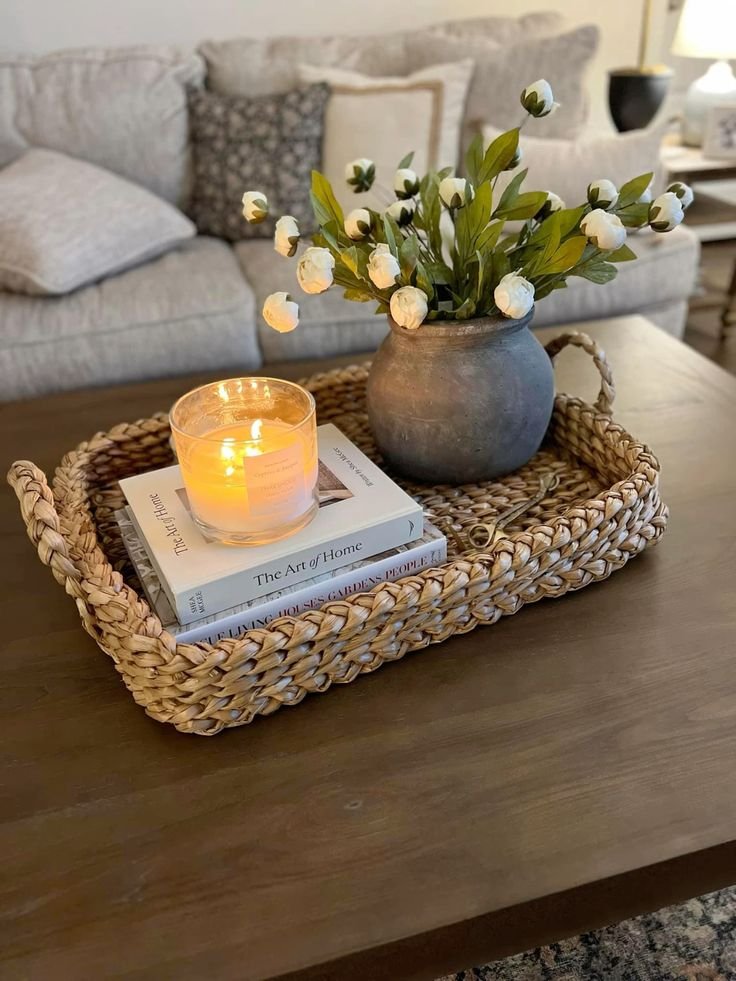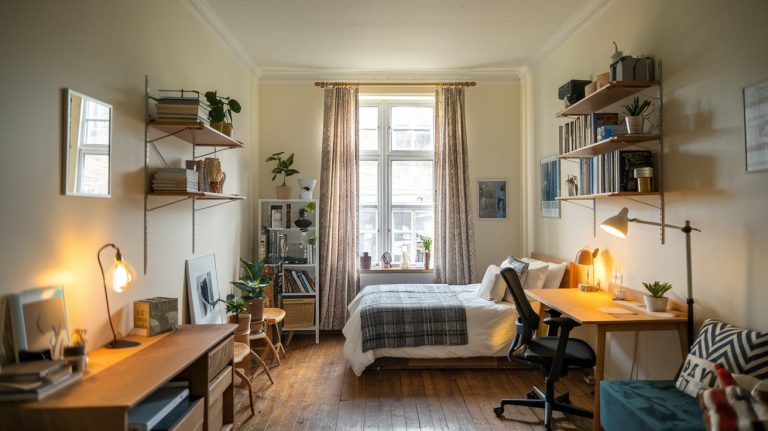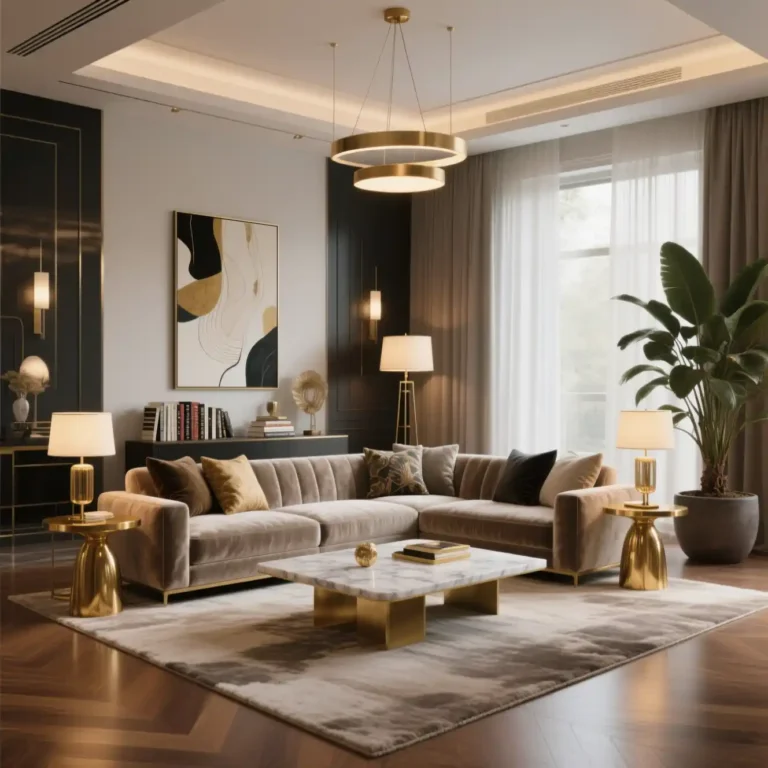
Your coffee table often ends up as a catch-all for everyday items like remotes, mail, and cups, turning it into a cluttered surface that can affect the entire room’s appearance. Although it plays a central role in your living area, it’s easy for this piece of furniture to lose its purpose and style amid the chaos.
By organizing your coffee table thoughtfully, you can create a space that is both practical and visually appealing. Learning how to declutter, define your table’s function, and apply simple styling techniques will help you maintain an inviting and organized living space.
Why Organizing Your Coffee Table Truly Matters
The Importance of a Positive First Impression
Your coffee table is often one of the first features guests notice when entering your living space. A clean, thoughtfully arranged table sends a welcoming and organized message. Conversely, clutter can create an impression of disorder, making visitors feel less at ease in your home.
How Tidiness Affects Your Mood and Focus
Keeping your coffee table neat can contribute to a calmer atmosphere. Clutter tends to distract or stress, while order promotes relaxation. A well-kept table helps you feel more centered and contributes to an inviting, peaceful environment.
Making Your Space Work Better for You
An organized coffee table means key items like remotes, coasters, and reading material are easy to find and use. It also frees up space for practical needs such as serving drinks or snacks, increasing the table’s functional value in your daily routine.
Enhancing the Look of Your Living Room
Your coffee table can act as a design focal point when styled properly. Clear surfaces allow you to display decorative items or art that complement your overall room decor, adding subtle elegance and cohesion to your space.
Showcasing Your Unique Taste and Interests
An orderly coffee table creates room to express your personality. You can highlight favorite objects, hobbies, or collections that reflect who you are. Cluttered surfaces hide these personal touches and diminish the character of your living area.
The Foundation: Decluttering and Deep Cleaning
The Strict Sort
Begin by clearing everything off your coffee table and the surrounding area. Remove items not only on top but also underneath and nearby shelves. Sort all belongings into three groups: Keep, Move Elsewhere, and Donate or Toss. Be realistic about what truly needs to stay on or near the table.
Ask yourself if you’ve used or needed each item in the past week. If an object does not serve a clear purpose, such as old mail, dried pens, or outdated magazines, it likely does not belong here.
Thorough Surface Care
Once cleared, focus on cleaning the table itself. Wipe the entire surface carefully, adapting your cleaning method to the material—wood, glass, metal, or stone. Don’t neglect parts like the legs, underside, and the nearby floor space.
After cleaning, reflect on whether your table’s size or storage options might be limiting your ability to keep the surface tidy. Adjustments here can prevent clutter from quickly returning.
Key Principles for Intentional Styling
When styling your coffee table, focus on a few core ideas to create a balanced and functional display. Start by grouping objects in odd numbers, like three or five, which tends to look more natural and visually engaging.
Mix items of different heights and textures—such as combining a tall vase with a softer fabric element or a smooth ceramic piece with a rough wooden object. This variety adds dimension and keeps the arrangement interesting.
Use containers like trays or small baskets to keep smaller decor grouped together. This not only tidies the surface but also makes it easy to clear the table when needed.
Avoid covering every inch; leaving some empty space helps your arrangement breathe and prevents clutter. Prioritize items you use frequently, positioning them where they are easy to reach without disrupting the look.
Finally, choose quality over quantity. A few carefully picked pieces create more impact than many random objects. Keeping your styling simple and purposeful enhances both form and function.
Key Components and How to Arrange Them
Functional and Decorative Tray
Choose a sturdy tray in a material and shape that matches your room—wood, metal, acrylic, or woven styles work well. Position the tray in the center or slightly off-center on your coffee table. Use it to group smaller items, which keeps the surface tidy and makes cleaning easier.
Books and Reading Materials
Include two to three books or magazines that have visually interesting covers or pages. Vary their sizes by stacking larger ones at the bottom and smaller on top. For an extra touch, open an art or photography book to a striking page. Use bookends if displaying multiple books upright.
Adding Plants and Floral Touches
Select a small plant like a succulent or snake plant, or a vase with fresh or high-quality faux flowers. These elements bring natural color and height to your arrangement. Place greenery or florals as the tallest piece in your grouping to add visual interest and balance.
Candles and Aroma Enhancers
Incorporate candles, either a single large one or a group with different heights for contrast. Choose scented candles or diffusers if you want to add fragrance, or go unscented for versatility. Candles contribute warmth and ambiance without overwhelming the space.
Personal and Artistic Accents
Place unique items such as sculptures, small figurines, or travel mementos that reflect your personality. Avoid very small pieces that can clutter the table visually. Add functional yet decorative items like coasters for protecting the surface and a container for remote controls to keep clutter in check and maintain organization.
| Item | Purpose | Styling Tips |
|---|---|---|
| Tray | Organize and anchor items | Place centrally, choose a material that matches your decor |
| Books/Magazines | Add layers and interest | Use 2-3 items, vary sizes, open a book to a captivating page |
| Plants/Florals | Introduce natural height and color | Make them the tallest item in grouping |
| Candles/Diffusers | Provide warmth and scent | Use large or grouped candles, select scent based on preference |
| Decorative Objects | Show personality and style | Use meaningful objects, avoid small clutter, add coasters and remote holders |
Maintenance and Habits for Lasting Organization
To keep your coffee table organized over time, develop consistent routines and habits. Apply the One-Minute Rule by immediately putting away anything that takes less than a minute to handle. This prevents small clutter from building up.
Set aside a few minutes each evening for a quick tidy-up to clear and reset your table. Once a week, spend some time dusting, wiping, and adjusting the arrangement of items for a fresh look.
Assign a specific place for every item on or around your coffee table to avoid random clutter. Regularly evaluate the things you keep there; remove anything that no longer adds value or functionality.
Encourage everyone in your home to participate in maintaining this space. Shared responsibility helps ensure the area stays orderly without placing the entire burden on one person.
Final Words
Start by selecting a purpose for your coffee table—whether it’s for displaying decor, holding books, or keeping essentials handy. Use trays to group small items, preventing clutter and making the space easier to tidy.
Stack books by size, largest on the bottom, to create a neat visual flow. Incorporate a single focal piece like a vase or sculpture to anchor the arrangement.
Keep only what you need and like on the table. Adjust your layout regularly to maintain balance between usefulness and style.





